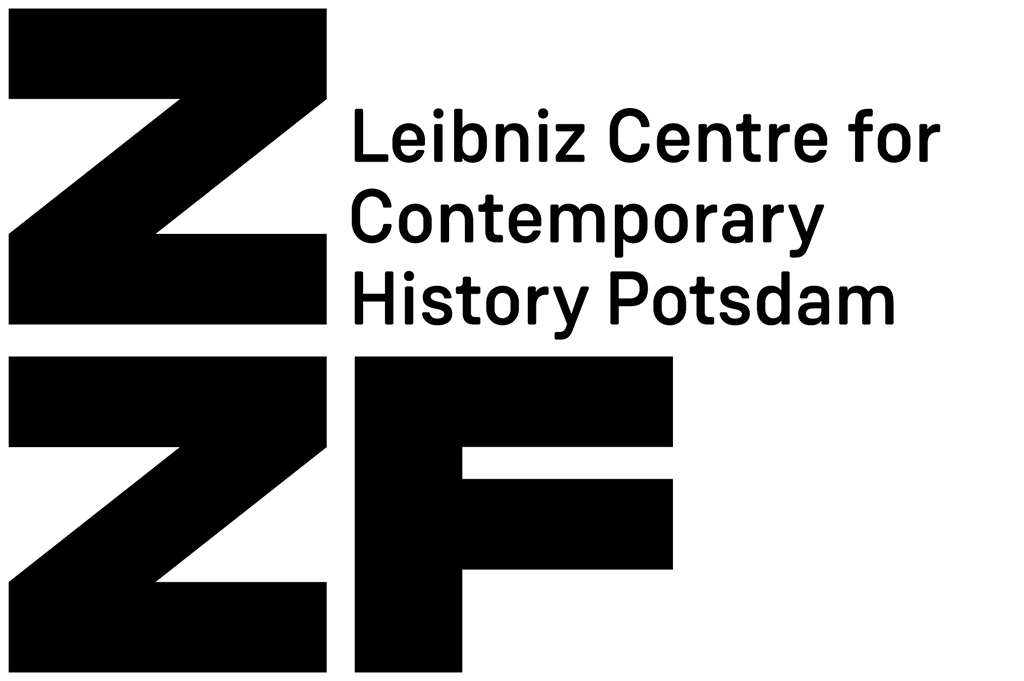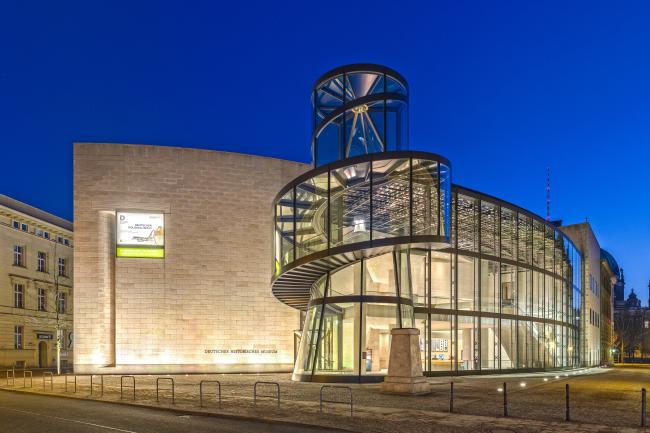The feuilleton is talking about a new trend: instead of buying everything new, people are sharing. Tools, baby rompers and neighbourhood help are offered on relevant portals under the catchphrase "sharing economy". We have been practising the principle of "trading instead of buying" for a while now, partly out of economic necessity, but also in order to be in dialogue with other institutions. While selected libraries receive ZZF publications as soon as they are published, we also regularly receive parcels of fresh books from friendly institutions.
The most recent addition is the German Historical Museum (DHM), which sent us three packages of new and older exhibition catalogues at the end of last year, none of which we already had in stock. The treasures received include:
Sparen. Geschichte einer deutschen Tugend, 2018 (ZZF 32323)
(Saving. The history of a German virtue)
Trading is just one form of (money) saving. This bright neon orange exhibition catalogue was produced in cooperation with a bank that presents itself in a rather chimney red colour and has saving (and not profit maximisation) in its name: the Berliner Sparkasse. In 14 essays, including contributions from Jürgen Kocka and Johannes Bähr, among others, the catalogue reflects on the (not necessarily compelling) connection between saving and banking from the 19th century, when the savings bank was invented, to the present day, for example when Carl-Ludwig Thiele asks about the "significance of cash as a store of value". This catalogue, actually more like an anthology, is beautifully designed and features numerous appealing colour illustrations.
Christiane Blass: DDR-Souvenirs ... und sie nannten es „Sonderinventar“, 1994 (4° ZZF 32337)
(GDR souvenirs ... and they called it "special inventory")
Do you know this too? A holiday is as beautiful as it is fleeting. In order to preserve at least a memory of it, souvenirs are bought which then tend to irritate rather than delight on the shelf at home and primarily gather dust. When the Museum of German History, founded in 1952 and housed in the Zeughaus, was transferred to the DHM in the western part of the city in 1990, the museum staff from the West noticed a collection called "special inventory", which seemed rather bizarre, as it comprised souvenir gifts that were exchanged during state visits abroad or in the GDR. This entertaining, trilingual illustrated book is dedicated to these special souvenirs, including a portrait of Honecker on a wild boar hide (a gift from Ethiopian President Mengistu Haile Mariam) and "soil from Lenin's homeland" embedded in Plexiglas.
Stefan Moses: Abschied und Anfang. Ostdeutsche Porträts 1989-1990, 1991 (4° ZZF 32335)
(Farewell and Beginning. East German Portraits 1989-1990)
Stefan Moses (1928-2018), who had lived in Munich since 1950, repeatedly travelled to East Germany from the winter of 1989/90 until reunification to photograph the people living there. He did not do this in passing. Instead, he hung a white cloth in front of which he photographed the people in their work clothes. Instead of their names, the occupations of those portrayed are mentioned, such as cook or coal merchant, town planner or former pilot. Others are described with a task or lifestyle, such as Stasi dismantler or squatters.
In some pictures, the interplay between what is shown and what is named is unintentionally ambiguous, for example when a grim-looking beekeeper couple is described as "Mayor, party official – PDS, Neetzow". There are quite a few well-known figures among those described as writers, painters or party leaders.
Klaus Honnef, Ursula Breymayer (Hg.): Ende und Anfang: Photographen in Deutschland um 1945, 1995 (4° ZZF 32333)
(End and Beginning. Photographers in Germany around 1945)
This catalogue, which brings together 15 photographers who were in Germany around 1945 - from Margaret Bourke-White and Robert Capa to Yevgeny Khaldei – tells of an end and a beginning of a different kind. Some of the pictures have become icons of the culture of remembrance, others document the end of the war with all its wounds on houses and people.
Ruins and corpses, empty faces and bombed-out cities – what we see is more of a starting point than a beginning. Or, as Simone de Beauvoir described it after a visit to Berlin in February 1946 – and Klaus Honnef quotes her in the foreword to the volume: "Things themselves had begun to delirium." For a new beginning, the dead first had to be buried and the streets cleared of rubble.
1945 – Niederlage, Befreiung, Neuanfang: zwölf Länder Europas nach dem Zweiten Weltkrieg, 2015 (4° ZZF 32322)
(Defeat, liberation, new beginnings: twelve European countries after the Second World War)
But not only Germany and the Germans were destroyed and wounded after 1945. Nazi Germany had raged in many countries.
Worldwide, more than 60 million people fell victim to the war instigated by Germany.
The 2015 catalogue looks at the consequences of the war and the new beginning in 12 European countries, including the three Allied European victorious powers, all immediate neighbouring countries and Norway. The catalogue looks at the political and social developments of the immediate post-war period as well as the everyday lives of the people, which are shown through 36 selected biographies.
Olga Lander. Sowjetische Kriegsfotografin im Zweiten Weltkrieg, 2018 (4° ZZF 32325)
(Olga Lander. Soviet war photographer during the Second World War)
In a photo showing a meeting of former Soviet war photographers in the editorial offices of Sovetskoe Foto in Moscow, amidst the 31 highly decorated men, including Yevgeny Khaldei, sits a single woman: Olga Lander.
Born in 1909, she studied photography at the Stroganov Institute in Moscow, and then worked for the youth newspaper Komsomolskaya Pravda. At the beginning of 1943, the photographer was sent to the southwest front, where she was able to document the Battle of Stalingrad. She stayed with the army for six years. She experienced the end of the war in Austria and then remained with the Soviet occupying forces in Romania for another three years. Her photos show the everyday life of the soldiers, war as a craft and the combatants as heroes. Lander took photographs for a daily military newspaper. It was her job to show fighting, perseverance and victory – not death.
Winfried Ranke: Deutsche Geschichte – kurz belichtet. Photoreportagen von Gerhard Gronefeld, 1937-1965, 1991 (4° ZZF 32326)
(German history – briefly exposed. Photo reportages by Gerhard Gronefeld, 1937-1965
Gerhard Gronefeld (1911–2000) also learnt the craft of photography and was accredited as a photo reporter for the 1936 Summer Olympics.
During the Second World War, he worked for a Wehrmacht propaganda company. At times he had the status of a privileged special reporter. After the war, Gronefeld worked as a photo reporter for the Neue Berliner Illustrierte in East Berlin, among others, and from 1946 for Life magazine. From 1949, he was a permanent contributor to Quick, switched to Stern in 1964 and later specialised in animal photography. At the end of the 1980s, the DHM took over the photo archive of the photo reporter, who had depicted both the war and the emerging economic miracle.
Brennpunkt Berlin: die Blockade 1948/49 ; der Fotojournalist Henry Ries, 2008 (4° ZZF 32321)
(Hot spot Berlin: the blockade 1948/49); the photojournalist Henry Ries)
Henry Ries had actually emigrated to the USA with his family at the age of 20. But in 1945 he returned to Europe as a soldier.
From 1947, he worked as a photojournalist for the New York Times and photographed the Nuremberg war crimes trials and the Berlin Blockade, among other things. Ries photographed West Berlin during the airlift for an American audience who wanted to understand why a former enemy of the war should be supported with food. Sixty years later, Jochen Laufer explains the origins of the Berlin crisis in the exhibition catalogue and André Steiner explains the currency reform and the supply situation in Berlin in 1948/49. Henry Ries returned to New York in 1950. The DHM was able to acquire the photographer's estate in 2007.
Have fun browsing through the Visual History
wishes the library team
(26.03.2019)

